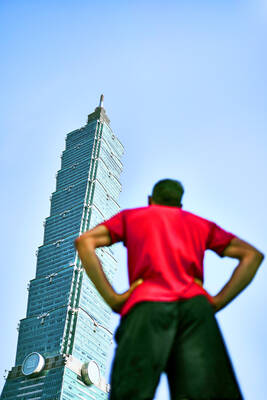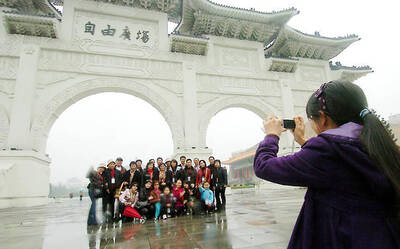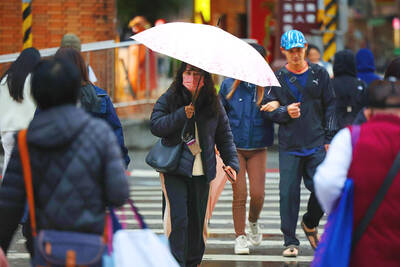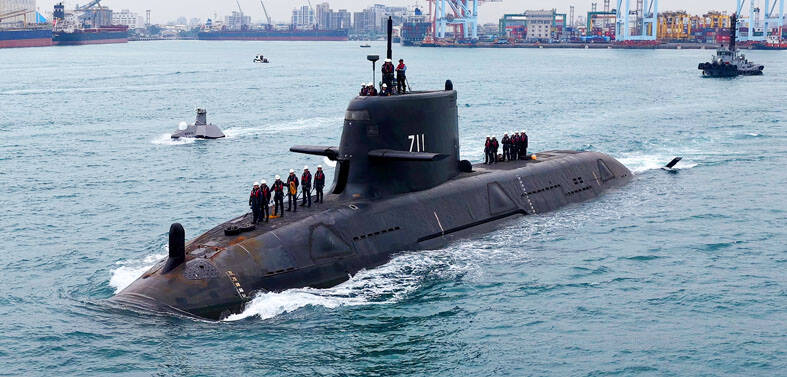Straddling a giant log, six men peer over the edge of a precipitous slope. There, they teeter as buglers and bards, dressed in bright robes and knickers, whip up the crowd.
Minutes later, a green flag goes up and the log hurtles down, twisting and bucking until it reaches a narrow paved road 100m below and throwing most of its riders along the way.
"Someone always gets hurt. I fell off and broke a rib on my first time down," said Kazuaki Miyasaka, a spry 60-year-old former sushi chef for whom this year's ride Friday was his fourth -- and final.
It's an unusually cavalier stunt in a country where decorum is cherished. But when it comes to Japanese festivals, the usual rules of conduct don't apply.
Every year, the Japanese stage thousands of festivals, big and small, celebrating traditions dating back centuries. Some mark the occasion when the gods of the country's indigenous Shinto religion commune with the townspeople who pay to upkeep local shrines. Others have ties to Buddhism or play on superstitions about the need to ward off evil spirits.
Mostly, though, they offer people a rare chance to let loose, and many take advantage of that by being outlandish or getting raucously drunk.
For sheer over-the-top zeal, nothing beats the "Onbashira," or sacred pillar, festival.
Held once every six years in the central Japanese towns along Suwa Lake, the festival combines the nature worship of Shinto with a dash of bravado and derring-do. Priests say it's ancient -- the oldest references to it go back more than 1,200 years to the time of Japan's first written histories, when "ujiko," or shrine parishioners, organized the events, much as they do today.
Over several months, the residents of this area fell sixteen massive ancient trees and drag them from the nearby mountains into town, where they are paraded down the main streets with music and dancing. Eventually, four logs will stand at the corners of each of Suwa Grand Shrine's four lesser shrines: Maemiya and Honmiya on the northern shore of the lake; and Harumiya and Akimiya on the southern side.
Residents believe deities dwell in the trees and the posts are supposed to bring spiritual renewal to the shrines, which represent the gods of hunting, farming, wind and water.
As one of Japan's biggest festivals, the Onbashira attracts a total of 2 million spectators. Thousands of townspeople are expected to take part in this year's festival.
On Friday, dozens of men and a few women in aprons or waist-length robes, knickers and the split-toed, knee-high shoes called "jikatabi" gathered in the morning half-light near eight logs cut earlier this year from fir trees hundreds of years old.
After a Shinto priest performed a purification ceremony with chants and a sprinkling of salt, everyone took sides along two massive straw ropes and began hauling the trees, the biggest of which measure more than 1 meter across and 17m-long and weigh over 12 tonnes.
Only three of the trees would make the first half of the trip into town; the others are expected to go over the next few days.
It's slow going: Nearly eight hours after the groups begin steering the monstrous trunks along the narrow mountain path, they arrived at the ledge for the "kiotoshi," the log ride that is by far the biggest tourist draw.
And it doesn't disappoint. Think of it as a mix of religion and show and extreme sport.
One minute, the riders are atop the log egging on the crowd and taking their positions as fireworks explode and bards sing folksongs to ask the townspeople to lend the men their strength. Buglers belt out a cavalry charge tune. A carpenter chops away the log's final support with a steel ax he carries in a straw sling.
Then, the riders are barreling down the hill, trying without much success to stay on.
Almost every year, a few riders -- or onlookers -- die and dozens more are hurt. That's why festival officials now choose riders beforehand based on fitness and past experience. And former riders like six-time downhiller, Hajime Okubo, coach neophytes on the fine points of leaning and holding on.
But danger is part of the thrill, according to Kunitake Fujimori, the 39-year-old owner of a construction firm who rode at the coveted head of the biggest of the day's logs. If it weren't for the risks, the festivities might lose their excitement.
"It gets the blood pumping," said Fujimori.
Miyasaka, the 60-year-old veteran, puts it differently: "Without the ride, it just wouldn't be a festival."

US climber Alex Honnold is to attempt to scale Taipei 101 without a rope and harness in a live Netflix special on Jan. 24, the streaming platform announced on Wednesday. Accounting for the time difference, the two-hour broadcast of Honnold’s climb, called Skyscraper Live, is to air on Jan. 23 in the US, Netflix said in a statement. Honnold, 40, was the first person ever to free solo climb the 900m El Capitan rock formation in Yosemite National Park — a feat that was recorded and later made into the 2018 documentary film Free Solo. Netflix previewed Skyscraper Live in October, after videos

NUMBERS IMBALANCE: More than 4 million Taiwanese have visited China this year, while only about half a million Chinese have visited here Beijing has yet to respond to Taiwan’s requests for negotiation over matters related to the recovery of cross-strait tourism, the Tourism Administration said yesterday. Taiwan’s tourism authority issued the statement after Chinese-language daily the China Times reported yesterday that the government’s policy of banning group tours to China does not stop Taiwanese from visiting the country. As of October, more than 4.2 million had traveled to China this year, exceeding last year. Beijing estimated the number of Taiwanese tourists in China could reach 4.5 million this year. By contrast, only 500,000 Chinese tourists are expected in Taiwan, the report said. The report

Temperatures are forecast to drop steadily as a continental cold air mass moves across Taiwan, with some areas also likely to see heavy rainfall, the Central Weather Administration (CWA) said. From today through early tomorrow, a cold air mass would keep temperatures low across central and northern Taiwan, and the eastern half of Taiwan proper, with isolated brief showers forecast along Keelung’s north coast, Taipei and New Taipei City’s mountainous areas and eastern Taiwan, it said. Lows of 11°C to 15°C are forecast in central and northern Taiwan, Yilan County, and the outlying Kinmen and Lienchiang (Matsu) counties, and 14°C to 17°C

STEERING FAILURE: The first boat of its class is experiencing teething issues as it readies for acceptance by the navy, according to a recent story about rudder failure The Hai Kun (海鯤), the nation’s first locally built submarine, allegedly suffered a total failure of stern hydraulic systems during the second round of sea acceptance trials on June 26, and sailors were forced to manually operate the X-rudder to turn the submarine and return to port, news Web site Mirror Daily reported yesterday. The report said that tugboats following the Hai Kun assisted the submarine in avoiding collisions with other ships due to the X-rudder malfunctioning. At the time of the report, the submarine had completed its trials and was scheduled to begin diving and surfacing tests in shallow areas. The X-rudder,